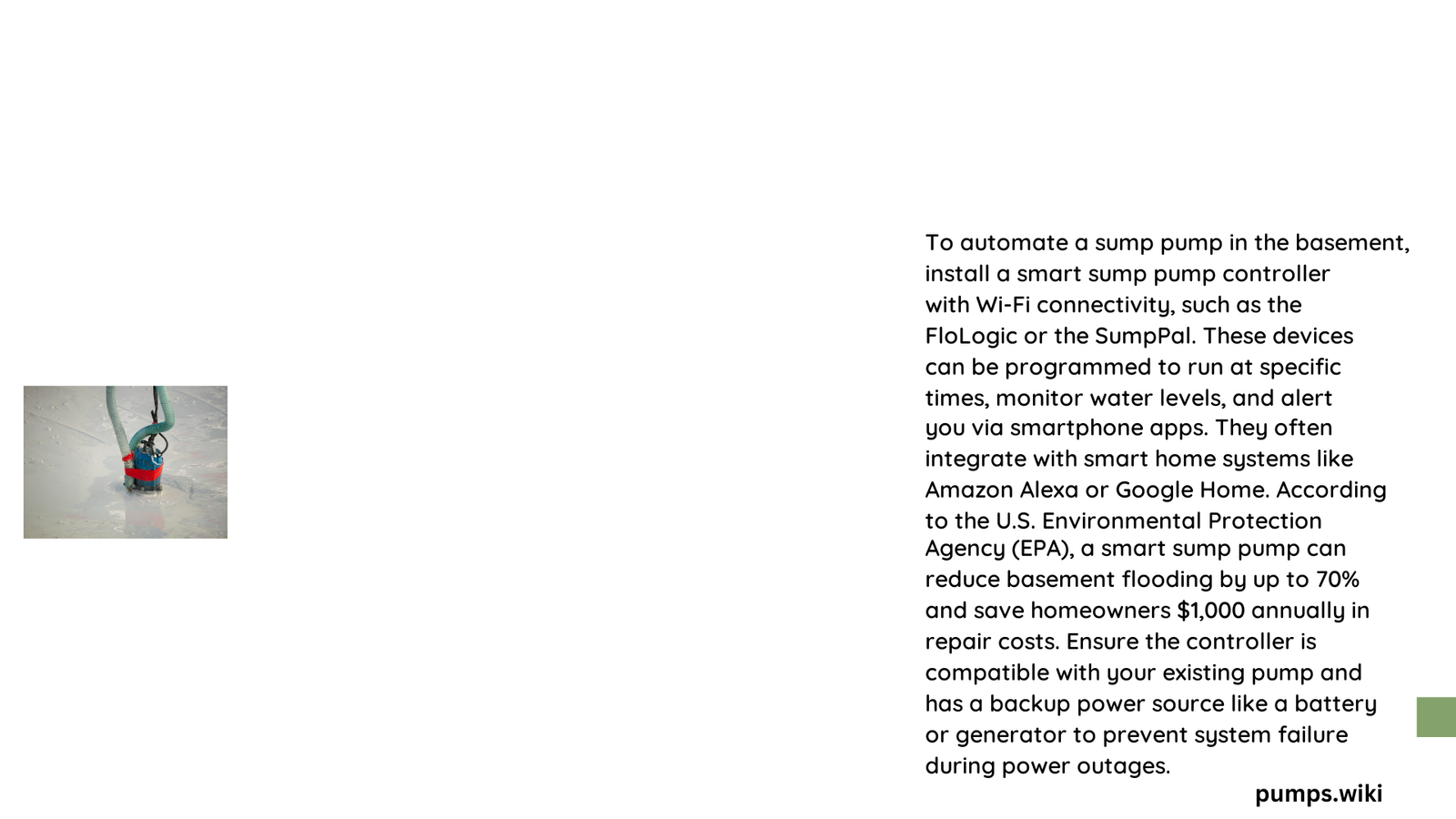Basement water management has evolved dramatically with smart technologies enabling homeowners to automate sump pump systems effectively. Modern automation solutions provide real-time monitoring, instant alerts, and seamless integration with smart home ecosystems, transforming traditional water management approaches. Homeowners can now prevent potential flooding, reduce water damage risks, and maintain a dry basement through intelligent, connected systems that offer unprecedented control and peace of mind.
What Are the Primary Methods to Automate a Sump Pump?
Automating a sump pump involves implementing sophisticated technological solutions that monitor water levels, trigger pump activation, and provide comprehensive monitoring capabilities. Here are the primary automation strategies:
1. Float Switch Automation Techniques
How Do Float Switches Work?
- Mechanical Operation: Rises and falls with water level
- Trigger Mechanism: Activates pump when water reaches specific height
- Reliability: Simple and cost-effective solution
| Switch Type | Activation Range | Cost | Durability |
|---|---|---|---|
| Tethered Float | 6-12 inches | Low | Moderate |
| Vertical Float | 3-6 inches | Medium | High |
| Electronic Float | Customizable | High | Very High |
2. Electronic Sensor Automation
What Technologies Enable Advanced Monitoring?
- Ultrasonic Sensors: Measure water depth without physical contact
- Pressure Transducer Sensors: Detect water levels through pressure variations
- Conductivity Sensors: Trigger alerts based on electrical conductivity changes
3. Smart Controller Integration
How Can Smart Controllers Enhance Sump Pump Performance?
- Remote Monitoring: Track water levels via smartphone apps
- Automated Alerts: Receive notifications about potential flooding
- Performance Diagnostics: Regular system health checks
- Cloud Synchronization: Store historical water level data
4. Connectivity and Communication Options
What Communication Protocols Support Sump Pump Automation?
- Wi-Fi: Comprehensive remote access
- Bluetooth: Local device communication
- Cellular Backup: Continuous monitoring during network disruptions
5. Installation Considerations
What Factors Determine Successful Automation?
- Sensor Placement: Precise positioning in sump pit
- Electrical Compatibility: Matching voltage requirements
- Water Resistance: Ensuring sensor durability
- Power Backup: Implementing battery or generator support
6. Cost Analysis of Automation Solutions
What Investment Is Required?
- Basic Float Switch: $20-$50
- Electronic Sensor: $50-$150
- Smart Controller: $100-$300
- Professional Installation: $200-$500
7. Recommended Automation Products
Which Systems Offer Best Performance?
- Zoeller Smart Sump Controller
- Wi-Fi connectivity
- Mobile app integration
-
Comprehensive monitoring
-
Insteon Water Leak Sensor
- High accuracy detection
- Smart home compatibility
- Real-time alerts
8. Maintenance and Troubleshooting
How to Ensure Long-Term Reliability?
- Regular sensor calibration
- Annual system diagnostics
- Clean sensor surfaces
- Check battery backup systems
Key Takeaways

- Automation provides comprehensive water management
- Multiple technological options available
- Investment protects against potential water damage
- Professional consultation recommended for complex setups
Pro Tips
- Choose sensors compatible with existing infrastructure
- Prioritize systems with backup power options
- Consider professional installation for complex setups
Note: Always consult local electrical and plumbing professionals before implementing advanced automation systems.
